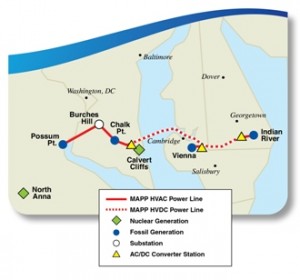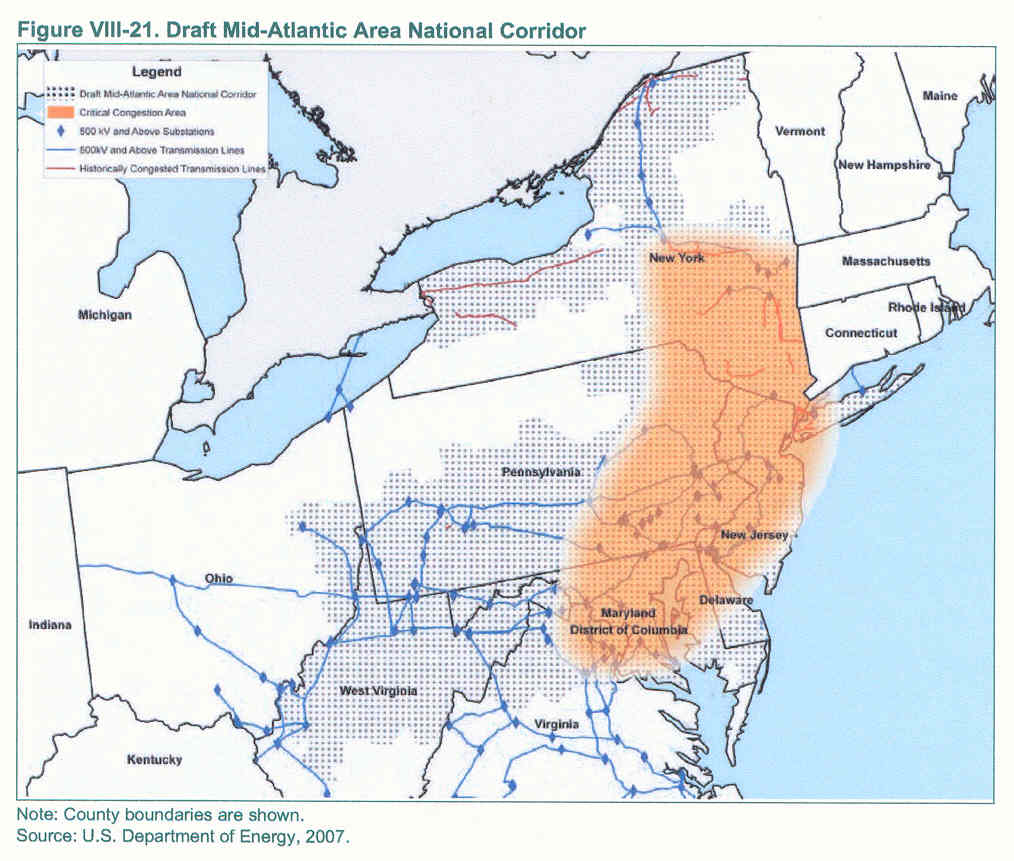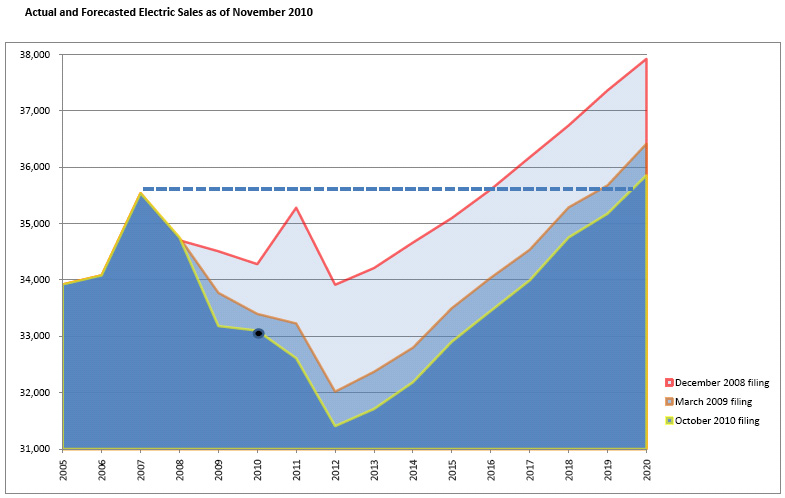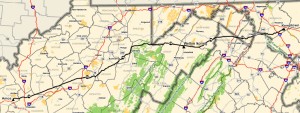ILSR’s Farrell on Fed Transmission Scam
June 29th, 2011
ILSR’s John Farrell is halfway there – he recognizes the federal part of the transmission equation, but the state part is missing, for example, Minnesota’s special eminent domain exemptions for “Public Service Corporations” (particularly where the transmission is for private profit, NOT public service), rate recovery for “Construction Work in Progress” and state regulators refusal to examine the interstate nature of transmission proposals. And the third part of that unholy trinity — in the Midwest, bulk power transmission would not be being built but for the Settlement Agreement – ME3(Fresh Energy), Izaak Walton League (and Walton’s program Wind on the Wires), Minnesota Center for Environmental Advocacy, and North American Water Office. This glut of transmission is their legacy. It takes all three to build transmission.
From Grist, today:
Feds running a high-voltage gravy train for power transmission
by John Farrell
28 Jun 2011 6:00 AM
Even as distributed generation shows economical and political advantages over centralized renewable energy, the Federal Energy Regulatory Commission (FERC) is running a high voltage gravy train in support of expanded transmission. FERC’s lavish program is expanding large transmission infrastructure at the expense of ratepayers instead of looking at more economical alternatives.Since 2007, FERC has had 45 requests for bonus incentives for transmission development — authorized under the 2005 Energy Policy Act — and has provided all or most of the requested incentives in more than 80 percent of the cases. With the bonuses, the average return on equity for utilities for their new transmission investments is nearly 13 percent. This high rate of return is a full 2.5 percentage points higher than the median utility return on equity [PDF], a value considered just and reasonable by state public service commissions in ordinary times. However, these rewards came during a time when unemployment doubled, the stock market tumbled, and most corporations were lucky to have any profit.The ratepayer impact of these bonuses is significant. In a November 2010 criticism of FERC transmission awards, Commissioner John Norris noted that the 2 percent bonus FERC provided to the PATH high-voltage project on the Eastern seaboard would “cost [Maryland] ratepayers in PJM at least $18 million per year.” The bonus payments were also given in concert with other incentives that reduced risk, including rate recovery during construction and guarantee of payment if the facilities were abandoned for reasons outside utility control.
MAPP line goes for FEDERAL LOAN GUARANTEES
March 7th, 2011
Remember the Mid-Atlantic Power Pathway?
A while back, PEPCO or PHI, announced that they would not be moving forward with this project.
Lower energy production puts brakes on powerlines – News Journal January 24, 2010
Now they’re going for DOE federally guaranteed loans… funny how that works. A project that is delayed and delayed because it is NOT needed, that they are NOT willing to finance on their own, that they can’t or won’t get market financing for it, that they can’t or won’t finance themselves, and so now they want federal financing? Sounds like the DOE needs some lessons from Fannie Mae about financing outrageous and unsupportable projects!
Thinking about this, and what that pro forma must look like, I called the DOE rep about getting a copy of the loan application. Seems it’s not online and it’s not public and I’m going to have to do a FOIA request to get it, and that it will be redacted. OK, whatever… will keep you all posted about that!
Here are the official notices of the financing arrangement and the scoping meetings:
And Pepco’s MAPP site has the announcement on their “Events” page:
The public hearings are as follows:
Date: Tuesday, March 22, 2011
Presentation of Project Description & Oral Comments: 7:00 pm
Place: Holiday Inn Express – Prince Frederick
355 Merrimac Court
Prince Frederick, MD 20678Date: Wednesday, March 23, 2011
Presentation of Project Description & Oral Comments: 7:00 pm
Place: Cambridge-South Dorchester High School
2475 Maple Dam Road
Cambridge, MD 21613Date: Thursday, March 24, 2011
Presentation of Project Description & Oral Comments: 7:00 pm
Place: Indian River Senior Center
214 Irons Ave
Millsboro, DE 19966
Be there or be square!
NIETC designation of corridors tossed out by 9th Circuit Court!!
February 1st, 2011
Wow! Amazing!!!! The 9th Circuit Court has tossed out the DOE’s designation of the National Interest Electric Transmission Corridors, and the DOE will now have to fully consult with states and do some serious environmental review:
Transmission from La Veta, Colorado
January 12th, 2011
Above is my view of La Veta, Colorado. As I drove in, I saw two deer sauntering, yes, SAUNTERING across a farm field at the edge of town. And in town, they were just walking around like they owned the place, fat and happy. This one above was a buck escorting two of his does, maybe one and last year’s progeny, and they were walking down the streets, through yards, hanging out oh-so-casual.
There are some days, well, most days, I confess, when I really love my job… yesterday was another!
Yesterday was a forum held by TLC, Transmission Line Coalition, last night in La Veta and tonight in Alamosa:
Here’s some of what I had to say:
Xcel, of course, was there, and I’m sure they’ll be there tonight!
Here’s the ALJ Recommendation, this will sound very familiar to those in Minnesota:
As we say in transmission, “IT’S ALL CONNECTED.”
(Pretend there’s a link here to USDA’s RUS EIS page – it’s DOWN DOWN DOWN) NEVERMIND, it’s now UP UP UP! From RUS (note this San Luis project is about 4 months behind Dairyland/Capx:
Tri-State Generation and Transmission
San Luis Valley-Calumet-Comanche Transmission Project – Huerfona, Alamosa and Pueblo Counties, CO – The agency has decided to prepare an Environmental Impact Statement on this proposal; the original level-of-review was an Environmental Assessment.
- Federal Register Notice to hold Scoping Meeting and the intent to prepare an Environmental Assessment (August 3, 2009 – 47 KB)
- Calumet-Comanche Electric System Improvement Project – Macro Corridor Study (May 2009 – 24 MB MB)
- San Luis Valley-Calumet-Comanche Transmission Project – Alternatives Evaluation (June 2009 – 510 KB)
- San Luis Valley Electric System Improvement Project – Alternatives Evaluation and Macro Corridor Study (June 2008 – 14.2 MB)
- Public Scoping Report (November 16, 2009 – 28.6 MB)
What I want to know is WHY they are using lower capacity ACSR conductor for these projects — and the claimed “need” is SO low, why aren’t they just reconductoring the whole system — ACSR, euwwww, that is SO 1960s:
And demand forecasts? Need a good laugh? Here’s the sales forecast for Public Service of Colorado, our good friends at Xcel:
I’ve just learned that this area is mushroom country — methinks that this “forecaster” has been dabbling in some of the more exotic varieties to come up with this chart!
PATH transmission challenged by WVa PSC staff
December 18th, 2010
Click map for larger version:
PATH, the Potomac Appalachian Transmission Highline, is in trouble… AGAIN…
The good news is that the West Virginia Public Service Commission staff is challenging need for the PATH line, which was already postponed by PJM. And then there’s these pesky states questioning the need, like Maryland, which challenged the corporate organizational form, noting that it wasn’t a utility so “get outta here!”
Now it’s time for the West Virginia PSC staff to raise its eyebrows and deliver a solid Motion to Dismiss:
For the entire docket, go here:
And here’s the way it looks in the press:
$2B PATH project faces dismissal by W. Va. regulators





